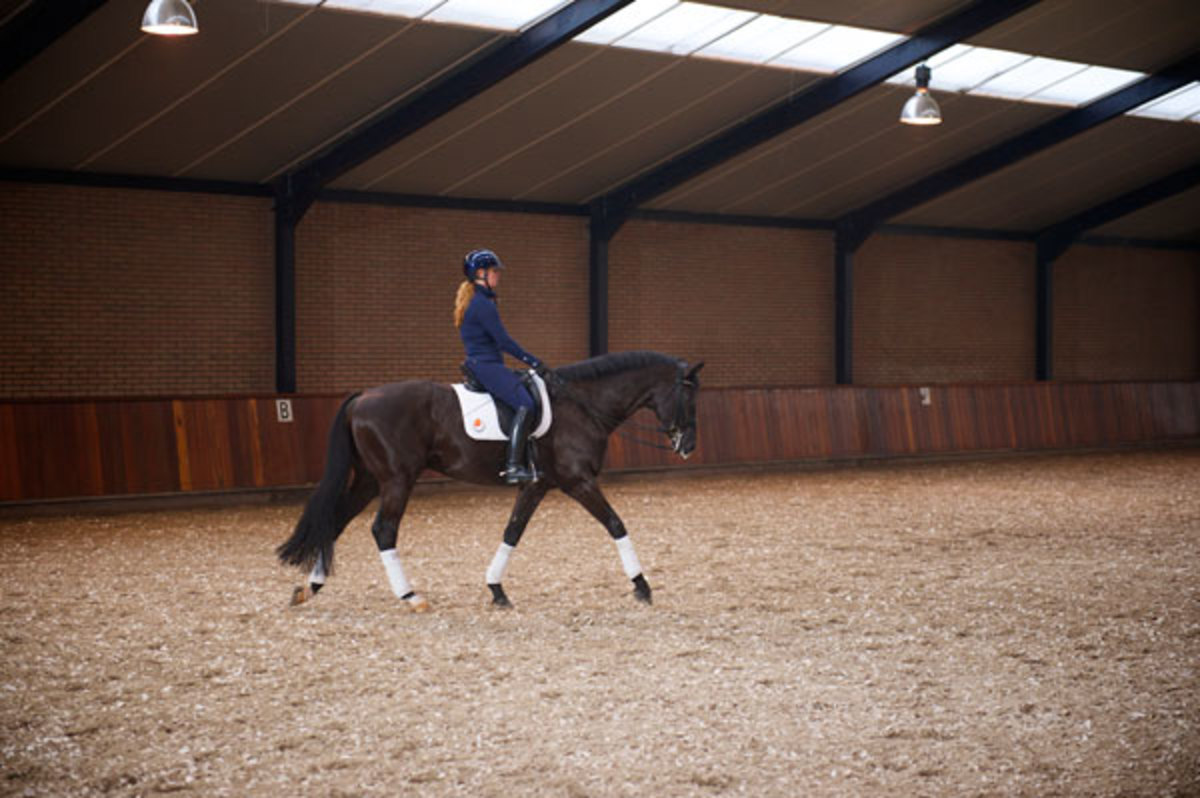Question: My horse and I are both coming back to work after having surgery (I had ankle surgery two and half months ago and my hunter/jumper/dressage off-the-track Thoroughbred had sinus surgery) and we are only allowed to walk. I was wondering if you have ideas for good exercises just at the walk to work on suppleness, straightness, flexibility and obedience.
Name withheld by request

Answer: Riding a horse who is rehabilitating from an injury can be risky. Add to that your own recovering injury, and you may find yourself in a precarious situation.
If your horse has not been ridden since his surgery, you would be wise to have an experienced rider get on him a few times before you ride him yourself. You may also want to “test drive” your ankle on a quiet horse that has been in regular work.
Once you are confident in your strength and your horse’s attitude, you will be able to make walk rides interesting and beneficial using the following program.
Begin your ride with a long or loose rein in the walk. Allow your horse to acclimate to the arena without making any demands of him. From there you can start making transitions to medium walk. (This also can be quite helpful if, when competing, your horse anticipates the trot when coming from free walk to medium walk.) You can also ask for walk–halt transitions.
Walking through test patterns is a good way to memorize them, and circles of varying sizes (20-, 15- or 10-meter) can be incorporated along the way. Be sure to emphasize correct bending with correct geometry.
Correct geometry is part of the difficulty of each test. Figures ridden larger than the test requires decrease the level of difficulty. Just as your horse should travel correctly on the circle, he should also travel correctly on half circles, serpentines and other figures. The USEF test sheets have new diagrams on the test, and there are many other resources that provide diagrams of test movements, including Whinny Widgets and the USEF Rule Book. Becoming familiar with correct geometry not only will improve your test scores, it will enable you to train your horse correctly.
Depending on what your horse’s training has been, you may want to add some lateral work as time progresses. Start with the movements he already knows. Later you can introduce new lateral work. Remember that all horses benefit from breaks during schooling sessions. Reward him with a few minutes on a loose rein when he gives you good responses. If you feel safe to walk him outside the arena, incorporate it into your program, as it is always an excellent way to start and finish your ride.
Martha Kemmer is a USDF bronze and silver medalist and Certified Instructor through Fourth Level. She teaches and trains at Full Circle Farm in Columbus, North Carolina.












